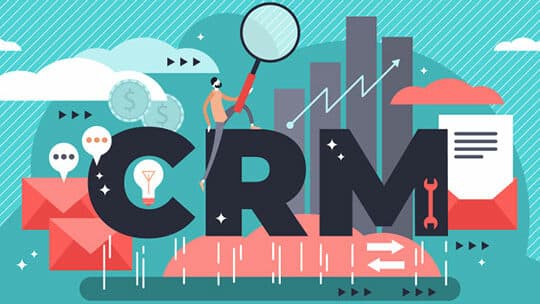Investing in a Customer Relationship Management (CRM) system is one of the smartest moves a growing business can make. A well-implemented platform can transform scattered spreadsheets and disconnected communication channels into a single, streamlined hub for tracking leads, managing customer relationships, and boosting sales performance.
But while most companies focus on subscription fees when budgeting for a CRM, the real costs often run much deeper. Many teams underestimate how much time, money, and effort it takes to set up, customize, and fully adopt a new system. This is why so many CRM initiatives end up over budget or underused.
If you’re planning to implement a CRM – or even if you’re already in the process – it pays to understand these hidden costs ahead of time. By anticipating common challenges, you can build a realistic plan, avoid unnecessary spending, and ensure your team actually uses the platform to its fullest potential.
Below, we’ll break down some of the most frequent hidden costs of CRM implementation – and share practical ways to avoid them.
1. Time Lost to Poor Planning

One of the biggest pitfalls companies face is diving in without a clear roadmap. In the rush to get started, it’s easy to assume you’ll “figure it out as you go.” But skipping the planning phase often leads to chaos later:
- Teams spend countless hours adjusting workflows on the fly.
- Data ends up in the wrong places.
- Duplicate or incomplete records waste time and damage trust in the system.
These delays can create frustration and kill momentum before your CRM ever delivers results.
How to avoid it?
Before you even touch the software, set aside time to define your objectives. Ask yourself and your team:
- What exactly do we want to accomplish in the first 90 days?
- How will success be measured?
- Who is responsible for each phase of the project?
It’s also essential to map out your ideal sales process in detail. Outline each stage your leads pass through, the touchpoints involved, and the data you need to track. This blueprint will guide your CRM configuration and prevent costly detours.
2. Incomplete or Messy Data Migration

Migrating contacts, deals, and historical records is rarely as simple as exporting a spreadsheet and uploading it into your new CRM. In reality, data migration is often where projects get bogged down – and where hidden costs start piling up.
Common challenges include:
- Mismatched fields that don’t map correctly between systems.
- Missing or outdated information.
- Duplicate entries that confuse users.
- Lost historical notes or activity logs.
When data migration goes poorly, your team spends weeks cleaning up records – or worse, they stop trusting the CRM altogether.
“A botched migration doesn’t just clutter your database – it sows doubt in every click. Incomplete records make even the best CRM feel like an unreliable narrator.”Salesforce
How to avoid it?
Data prep takes time, but it pays dividends. Start by cleaning and organizing your records before you migrate anything. Standardize field names and formats, remove obsolete entries, and double-check the accuracy of critical information.
Before a full import, do a small test migration. Verify that records appear exactly as expected. This simple step can help you catch and fix issues before they become a major problem.
3. Low User Adoption

Even the most advanced CRM is useless if your team won’t use it consistently. Low adoption is one of the biggest reasons CRM investments fail to deliver ROI.
Why does this happen? In many cases, resistance stems from two factors:
- The system feels too complicated or clunky.
- It doesn’t align with how people actually work day to day.
When your CRM becomes a chore instead of a helpful tool, employees naturally fall back into old habits, like maintaining their own spreadsheets or relying on memory. The result? Data silos, missed opportunities, and wasted time.
How to avoid it?
Bring your team into the process early. Solicit their input when mapping workflows and selecting features. Make sure your CRM feels intuitive, not intimidating.
Equally important: provide hands-on training tailored to each role. Don’t just send a few generic videos and expect everyone to figure it out. Show your team how to perform their most common tasks step by step.
Consider appointing internal champions – team members who can answer questions and encourage best practices.
4. Unplanned Customization and Add-Ons

No two businesses operate exactly alike, so it’s natural to want your CRM configured to match your unique processes. But there’s a fine line between necessary customization and feature overload.
A common hidden cost is the temptation to keep adding paid modules, premium features, and bespoke automations – often because the out-of-the-box setup doesn’t fit as expected. Over time, these costs can snowball:
- Monthly fees for each extra module.
- One-time charges for custom development.
- Ongoing costs for maintaining or updating integrations.
These expenses often catch teams by surprise.
“Every puzzle piece adds color, but too many can blur the picture. Choose add-ons that make your work shine, not slow you down.”Adobe
How to avoid it?
During planning, create a prioritized list of “must-have” and “nice-to-have” features. Focus first on the core functions that will deliver the most immediate value.
Also, clarify what your subscription includes and what requires an upgrade or additional payment. By making deliberate choices instead of reacting on the fly, you’ll control costs and avoid feature creep.
5. Integration Overload

A CRM rarely exists in isolation. Most businesses rely on a constellation of apps – email platforms, accounting tools, customer support systems, and marketing automation software. Connecting these tools to your CRM can save time and reduce manual data entry.
However, each integration comes with its own setup, maintenance, and potential troubleshooting. Over time, the cumulative complexity can become a hidden drain on resources. For example:
- Integration errors can cause data mismatches or duplicates.
- Updates to third-party tools may break connections.
- Employees may need training to understand how integrated workflows function.
How to avoid it?
Start simple. Instead of trying to integrate everything at once, choose only the most essential connections that will immediately improve efficiency. Confirm that your CRM offers native integrations for those tools, as native options are typically easier and less expensive to maintain.
When in doubt, phase in additional integrations gradually, so you have time to test and document each step.
6. The Cost of DIY Implementation

One of the most underestimated costs of CRM implementation is the toll it takes when companies try to handle everything in-house.
At first glance, doing it yourself may seem like a way to save money. But in practice, the DIY approach often leads to:
- Longer timelines as teams to learn by trial and error.
- Misconfigured workflows that require rework.
- Inconsistent training and user adoption.
- Lower ROI as the system fails to deliver promised efficiencies.
When you consider the hours spent troubleshooting, reconfiguring, and retraining, the cost of DIY implementation can far exceed the price of hiring professional help.
“When training falters and adoption lags, the dream of efficiency slips away. A DIY approach can turn even the best intentions into wasted effort.”Flow Digital
How to avoid it?
With expert guidance, you not only avoid hidden costs but also unlock the full value of your CRM investment much faster.
7. Ongoing Maintenance and Support

Even after a successful rollout, your CRM will require regular attention. Updates, new feature rollouts, and evolving business processes all demand maintenance to keep things running smoothly.
Many companies overlook this step, assuming the work ends once the system goes live. But without a clear support plan, issues can build up:
- Outdated workflows no longer reflect current practices.
- Data hygiene deteriorates over time.
- Employees lose confidence if problems go unresolved.
How to avoid it?
Plan for ongoing support from day one. Assign an internal owner responsible for regular reviews and updates. Schedule quarterly check-ins to assess performance, gather user feedback, and refine workflows as needed.
If your team doesn’t have the bandwidth or expertise, consider partnering with a CRM consultant on a retainer basis for proactive support and optimization.
Final Thoughts

A successful CRM project isn’t just about choosing the right software – it’s about planning, execution, and adoption. By understanding the hidden costs upfront, you can build a realistic budget, avoid unnecessary expenses, and set your team up for long-term success.
Ultimately, your CRM should empower your business to work smarter, close more deals, and deliver better customer experiences. When in doubt, investing in professional help is often the most cost-effective decision you can make. It frees your team to focus on what they do best: serving customers and driving growth.
If you want to avoid common pitfalls and get the most from your CRM, don’t hesitate to explore expert guidance. The right partner can make all the difference in transforming your investment into measurable results.






